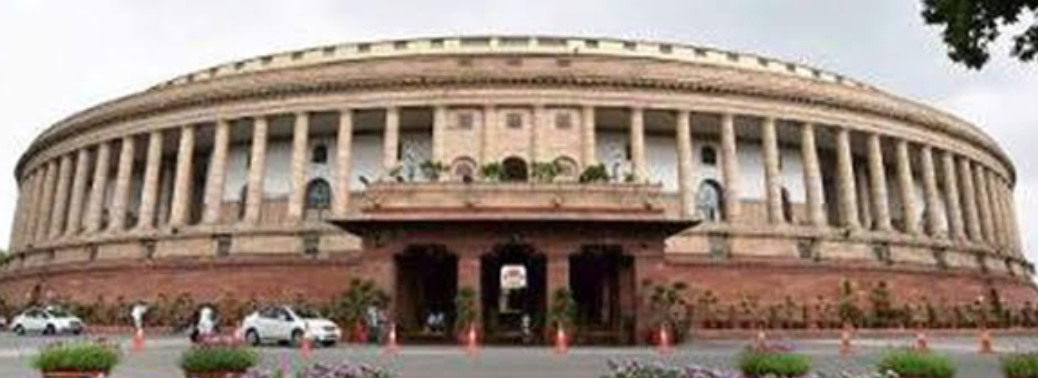WHY LOK SABHA IS STILL 543?
14, Oct 2019

Prelims level : Indian Polity
Mains level : GS-II- Parliament and State Legislatures – Structure, Functioning, conduct of Business, powers & privileges and issues arising out of these.
Why in News?
- Last week, former Union Minister and Congress leader Jitin Prasada said the number of Lok Sabha seats should be rationalised on the basis of population. The composition of the Lower House has remained more or less the same for four decades.
Strength of Lok Sabha:
- Article 81 of the Constitution defines the composition of the House ofthe People or Lok Sabha.
- It states that the House shall not consist of more than 550 electedmembers of whom not more than 20 will represent Union Territories.
- Under Article 331, the President can nominate up to two Anglo-Indians if he/she feels the community is inadequately represented in the
- At present, the strength of the Lok Sabha is 543, of which 530 havebeen allocated to the states and the rest to the Union Territories.
- Article 81 also mandates that the number of Lok Sabha seats allottedto a state would be such that the ratio between that number and thepopulation of the state is, as far as possible, the same for all states.
- This is to ensure that every state is equally represented. However, thislogic does not apply to small states whose population is not more than60 lakh.
- So, at least one seat is allocated to every state even if it means that itspopulation-to-seat-ratio is not enough to qualify it for that seat.
- As per Clause 3 of Article 81, population, for the purpose of allocationof seats, means “population as ascertained at the last precedingcensus of which the relevant figures have been published”. In otherwords, the last published Census.
- But, by an amendment to this Clause in 2003, the population nowmeans population as per the 1971 Census, until the first Census takenafter 2026.
When was the strength of Lok Sabha Changed?
- The strength of the Lok Sabha hasn’t always been 543 seats.Originally, Article 81 provided that the Lok Sabha shall not have morethan 500 members.
- The first House constituted in 1952 had 497. Since the Constitutionprovides for population as the basis of determining allocation of seats,the lower House’s composition (total seats as well as readjustment ofseats allocated to different states) has also changed with each Censusup to 1971.
- A temporary freeze was imposed in 1976 on ‘Delimitation’ until 2001.Delimitation is the process of redrawing boundaries of Lok Sabhaand state Assembly seats to represent changes in the population.However, the composition of the House did not change only withdelimitation exercises in 1952, 1963, 1973 and 2002.
- There were other circumstances as well. For instance, the first changein the composition of Lok Sabha happened in 1953 after thereorganisation of the state of Madras.
- With a new state of Andhra Pradesh carved out, 28 of Madras’s 75seats went to Andhra Pradesh. The total strength of the House (497)did not change.
- The first major change took place after the overall reorganisation ofstates in 1956, which divided the country into 14 states and six Union
- This meant subsequent changes in the boundaries of existing statesand hence, a change in the allocation of seats to the states and UnionSo with reorganisation, the government also amended the Constitutionby which the maximum number of seats allocated to the statesremained 500, but an additional 20 seats (also maximum limit) wereadded to represent the six Union Territories.So the second Lok Sabha elected in 1957 had 503 members. Furtherdown the years, the lower House’s composition also changed when thestate of Haryana was carved out of Punjab in 1966 and when Goa andDaman and Diu were liberated in 1961 and merged with the Indian Unionsubsequently.
When it was Frozen, and why?
- As per Article 81, the composition of the Lok Sabha should representchanges in population.But it has remained more or less the same since the delimitation carriedout based on the 1971 Census.
- The population-to-seat ratio, as mandated under Article 81, should bethe same for all states.
- Although unintended, this implied that states that took little interest inpopulation control could end up with a greater number of seats in
- The southern states that promoted family planning faced thepossibility of having their seats reduced. To allay these fears, theConstitution was amended during Indira Gandhi’s Emergency rule in1976 to suspend delimitation until 2001.
- Despite the embargo, there have been a few occasions which havecalled for readjustment in the number of Parliament and Assembly seatsallocated to a state. -These include statehood attained by ArunachalPradesh and Mizoram in 1986, the creation of a Legislative Assemblyfor the National Capital Territory of Delhi, and creation of new statessuch as Uttarakhand.
- Although the freeze on the number of seats in Lok Sabha andAssemblies should have been lifted after the Census of 2001, anotheramendment postponed this until 2026.
- This was justified on the ground that a uniform population growth ratewould be achieved throughout the country by 2026.
- So, the last delimitation exercise – started in July 2002 and finished onMay 31, 2008 – was conducted on the basis of the 2001 Census andonly readjusted boundaries of existing Lok Sabha and Assembly seatsand reworked the number of seats reserved for SCs and STs.
- With the total seats remaining the same since the 1970s, it is felt thatstates in north India, whose population has increased faster than therest of the country, are now underrepresented in the Parliament.
- It is frequently argued that had the original provision of Article 81 beenimplemented today, then states like Uttar Pradesh, Bihar and MadhyaPradesh would have gained seats and those in the south would havelost some.






